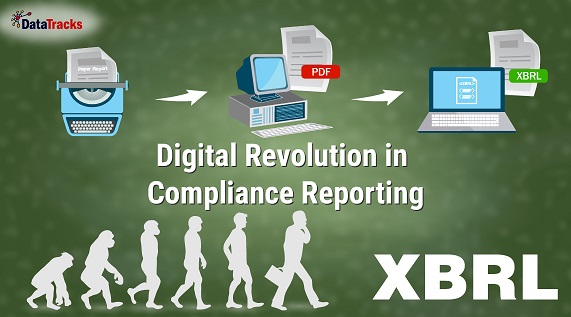If calling from Singapore.
Blog
Digital Revolution in Compliance Reporting

Computers revolutionised the world of information decades ago. ‘Interactivity’, however has been a more recent phenomenon. Hitherto, data collection by Regulators has always been in ‘non-interactive’ formats like PDF, Word, etc. This scenario is changing as we go to press. Regulators worldwide are now focused on collecting data/reports in ‘interactive’ formats such as XML, XBRL, etc. A layman wonders what the difference between these formats is and what the advantages of interactive format are. Here is a ready reckoner:
|
|
Non-interactive format |
Interactive format |
Advantage / Impact |
|
File formats |
Examples are .PDF, .doc, .docx, .xls, .xlsx, .html |
.XML, .XBRL, .XSD |
Advanced file format |
|
Data consumption |
Human readable |
Computer readable |
Computer query-able data |
|
Data search |
Manual through print or display on computers |
Programmable; instantaneous. |
Saves time, avoids manual errors |
|
Preparation |
Mostly through word processors and spreadsheets |
Through specialist software and Taxonomies |
Needs specialised preparation |
|
Data validation |
Moderate |
Very high |
Reliable data |
Advantages
It is evident that ‘interactive data’ format has its advantages in terms of:
- Data reliability
- Instantaneous querying nature
- Data comparability across peers, across periods
- Data archiving in unified format
- Transparency in reporting
Challenges
XBRL format seem to be the ONLY global choice, at least at the moment. It has its own challenges in generating this report. One needs to have the specialised software, knowledge of the taxonomy (dictionary of accounting terms) and the ability to troubleshoot validation errors.
Solution
The following solutions are available to a compliance officer for XBRL reporting:
Generate in-house
For this, it is highly recommended that team involved in preparing XBRL reports undergo training to have a basic understanding of this technology.
Company is also expected to purchase an XBRL software (if it is not provided free of cost by the Regulator)
Accountants should spend time in manually tagging each meta-data within the financial report. This is the most crucial part as it requires careful selection of accounting concepts from the list in the taxonomy.
Rely on your Accounting / Auditing / Secretary Firms
No doubt they will get this job done, but at a very high price tag and at a time period convenient to them.
Outsource XBRL work to service providers
Here, you simply forward your final version of the Accounts. Such XBRL service providers would tag each meta-data in your Accounts and return the validated XBRL file to you. Their cost could surprise you as it usually tends to be just a fraction of what your Accountants would typically charge.
To find out more about DataTracks, visit www.datatracks.com.sg or send an email to enquiry@datatracks.com.sg
